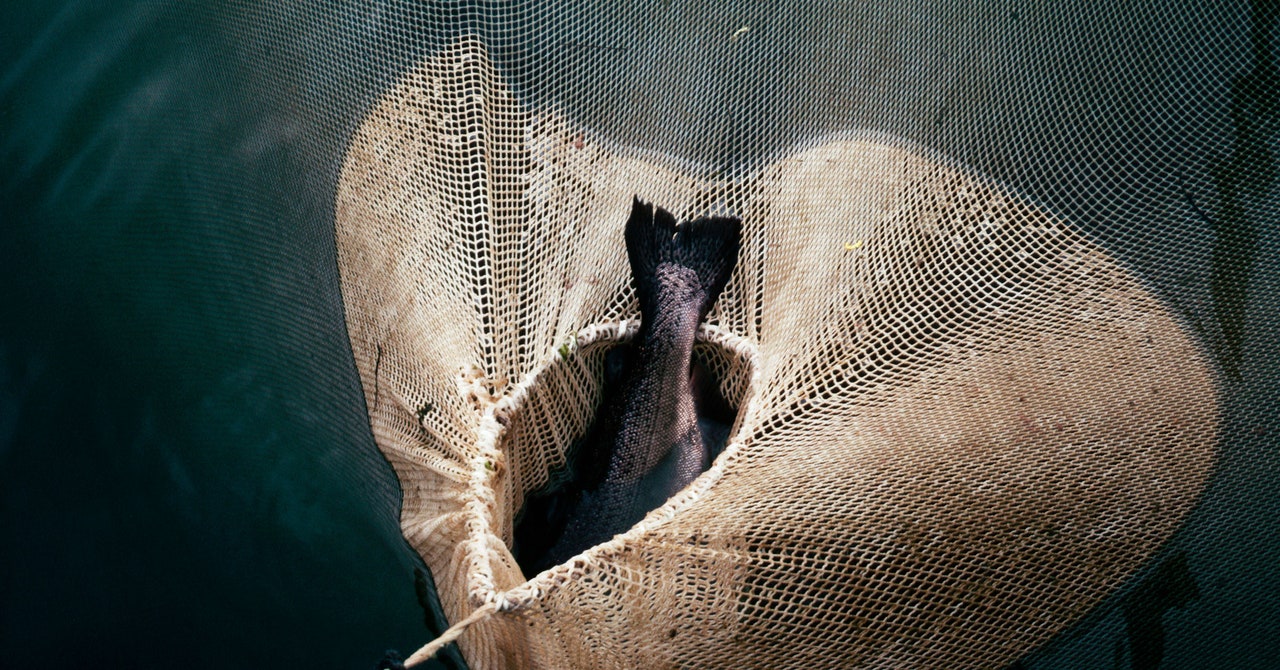
This might seem like a minor concern, in the wake of coral bleaching and mass extinction, but it could have serious knock-on effects. Take salmon for instance: Smaller fish mean less money for the communities who rely on catching them. It means less food for the wolves and bears that feed on them. It means they produce proportionally fewer eggs, which play an important role in adding nutrients to the rivers when salmon return there to spawn. “Reduction in salmon body size is directly affecting nature’s contributions to people, and that results in less protein, less eggs, less salmon returning, and has huge effects on the ecosystem at multiple levels,” says Sarah Sanderson, the paper’s lead author and a biology PhD candidate at McGill.
Trait changes can have similar effects. A 2021 study in Mozambique’s Gorongosa National Park found that the proportion of female elephants being born without tusks has shot up to more than 50 percent, as extreme levels of poaching during a 15-year civil war turned survival of the fittest on its head. Elephants without tusks were far more likely to pass on their genes to the next generation. Tuskless elephants won’t shape ecosystems in the same way as their toothier brethren: They won’t tear up the soil as much when digging for tubers, for instance. And analyzing DNA in their feces revealed that tuskless elephants eat different plants.
To compare changes across species over time, the researchers used metrics called darwins and haldanes (after the British scientist JBS Haldane). These are statistical measures that offer a way to compare the vastly different types of information in the database—from the height of birch trees growing near smelting operations in Russia to how the acidification of Swedish lakes is affecting frog survival rates.
The new analysis found that rates of phenotypic change were higher in populations affected by human activity than those that were not. But the researchers were surprised to find little evidence isolating climate change as the cause of phenotypic change. Pollution seemed to be a much bigger driver, responsible for changes like the ones observed in the Russian birches and the Swedish lakes. “We think that’s because it’s hard to say what’s [caused by] climate change versus something else,” says Hendry. “Climate change is happening everywhere.”
The effects of climate change will not be felt evenly all over the world: In the Arctic, it might mean polar bears developing new hunting behaviors that don’t rely on ice; in the oceans, it might mean that strains of coral already adapted to living in stressful environments become the dominant species, supplanting the ones we now know. “A lot of them are evolving really fast in response to these changes,” says Sanderson. “But what you don’t see, and what we can’t really quantify [with this work] is all these populations that aren’t adapting, and that are going extinct.”
The Proceed database is available online for academics hoping to answer new questions about rapid evolution. For now, it has confirmed that human actions are changing animal and plant species in ways that they may never recover from—the natural world forever marked by pollution, and that uniquely human desire to hunt and harvest long past the point of individual satiety.
That may seem grim, but you can interpret these results in a reassuring way too. If we overfish to the point where species start to shrink, well maybe that’s just a sign that humans are not immune to the feedback loops that govern every other living thing. The animals we know will change or disappear, and new ones will evolve to take their place—life will endure, even if life as we know it doesn’t. “Because of studies like these I don’t have any fear about life on Earth under climate change,” says Thomas Cameron, a senior lecturer in animal ecology at the University of Essex, who was not involved in the research. “The natural world will still exist, but it may not be the same world and some species will go extinct. But others will change and evolve.”


